-
First time in Oarai
-
News
-
Oarai Uminosato Journal
-
Spots
-
Gourmet
- Book accommodations
- Activities available for reservation
-
Tourist information center
-
Others
First time in Oarai
News
Oarai Uminosato Journal
Spots
Gourmet
Tourist information center
Others
Monkfish cuisine is one of the most famous winter specialties of Oarai. The monkfish caught off the coast of Oarai Town (Joban-oki), known for its abundance of plankton, small fish, and other marine resources, stands apart from others.
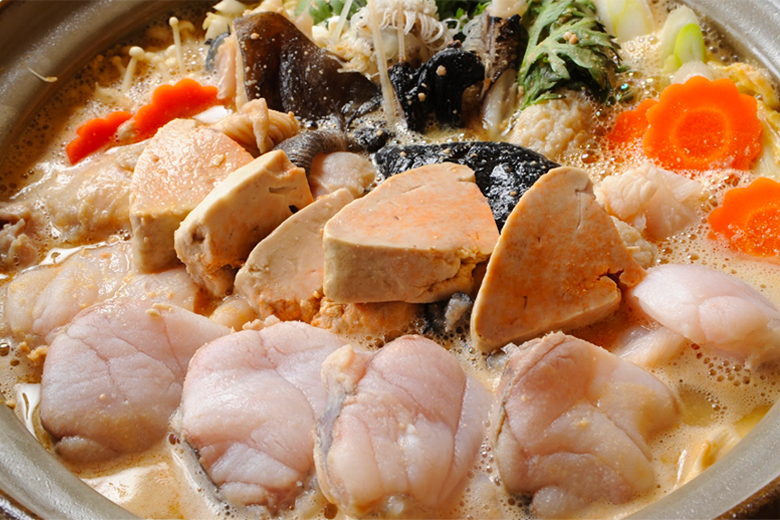
Monkfish caught off the coast of Oarai Town (Joban-oki), thriving in the cold waters abundant with plankton, are highly esteemed nationwide for their firm texture and delicious taste. Their reputation has led people to say, “Fugu in the west, monkfish in the east.” In particular, Oarai’s monkfish hot pot, known for enhancing flavor while maintaining a pleasant mouthfeel, attracts many fans due to its delightful eating experience. A variety of other excellent monkfish cuisines are also recommended.
Winter, [November to February]
The offshore area of Oarai Town (Joban-oki) is rich in plankton and small fish. Monkfish from this region, raised on an abundance of plankton and small fish, are particularly tasty. So delicious is it that the saying “Fugu in the west, monkfish in the east” has been developed. Monkfish has truly become Ibaraki’s representative winter delicacy. Monkfish has long been prized as a high-quality ingredient in both ryokan and traditional Japanese restaurants. Every part of the monkfish, except for the jaw and bones, is savored and highly valued. Furthermore, because monkfish has a slippery surface, it is hard to handle on a cutting board, and it is customary to suspend it before cutting (tsurushigiri).
Monkfish is considered to be at its best from November to February, when the liver is enlarged. In Oarai, monkfish cuisine can be enjoyed at restaurants and accommodations starting from November, when the season begins.
The meat, skin, air bladder (stomach), liver, ovaries, gills, and fins are the edible parts of monkfish, known as the seven treasures of monkfish. All parts of the fish can be eaten except for the bones, jaw, and eyeballs.
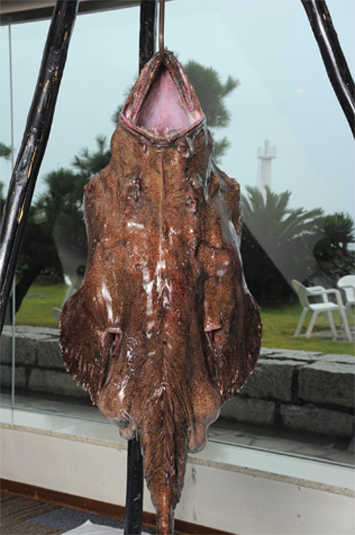
Monkfish was a high quality ingredient presented to the shogunate by the Mito domain during the Edo period.
Monkfish are caught throughout the country through a fishing method called trawling. However, the meat is firmer and tastier when it lives in cold seas, which is why monkfish caught in the seas north of Ibaraki are praised highly.
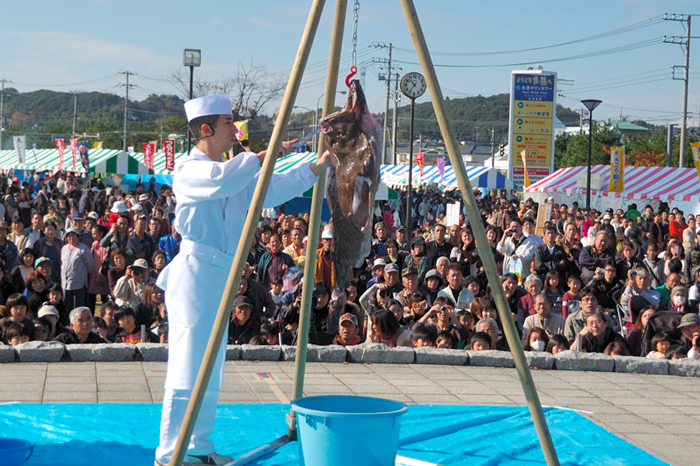
Monkfish caught off the coast of Oarai (Joban-oki), where plankton is abundant, are highly valued in the market. Their reputation has led people to say, “Fugu in the west, monkfish in the east.” In particular, monkfish hot pot is known as a representative winter delicacy of Ibaraki. In Oarai, you can enjoy the unique flavors of each restaurant, such as soy sauce-based hot pots with an elegant flavor or dobujiru-based rich hot pots made with miso paste. It is also recommended for its beauty benefits, as it contains a lot of collagen.
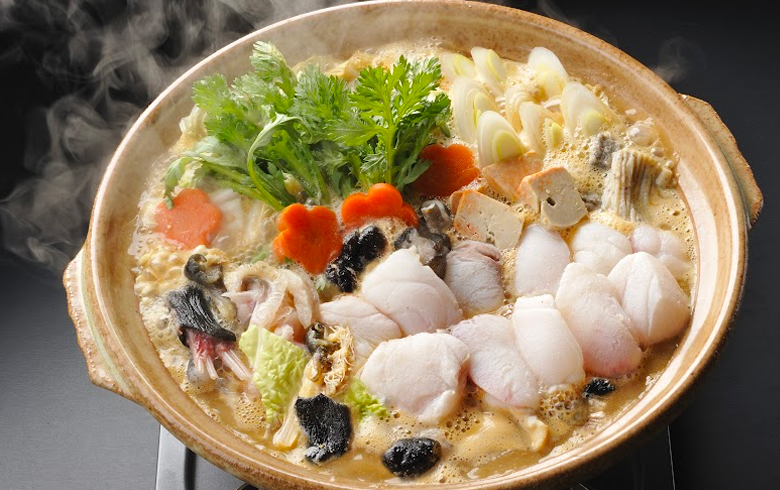
The most typical monkfish dish is monkfish hot pot. The meat, skin, liver, gills, and fins are all used and simmered together with vegetables. It is made with miso and has a smooth taste.
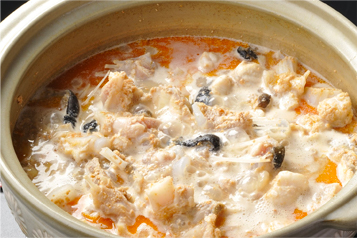
It is a dish created to warm the body on ships. First, monkfish liver is roasted in a hot pot, then chopped monkfish and vegetables are added. Miso is added to the juice of the ingredients and simmered. No water is used. This dish is richer than monkfish hot pot and has a dense, deep flavor.
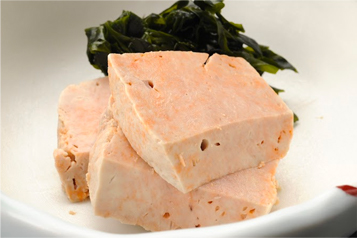
The most prized part of monkfish is the liver. The liver is rich and smooth and has a unique taste. The fatty liver is such a delicacy that it has been called the foie gras of the sea. Steamed liver is served with ponzu sauce.
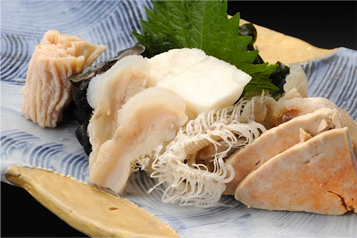
Ankotomozu is a snack that goes with sake is a local dish that is familiar to the locals of Oarai. It is a simple dish with parboiled monkfish meat and liver dipped into a sauce made by mixing the liver with vinegar and miso.
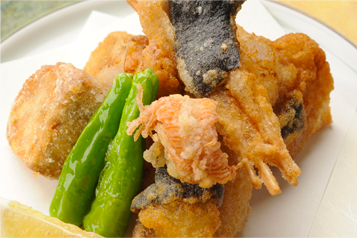
We recommend deep frying the light white meat parts and the gelatinous skin and fins. You can enjoy the soft and tender texture. Enjoy them hot with salt or lemon juice.
Click the image to view it as a PDF.
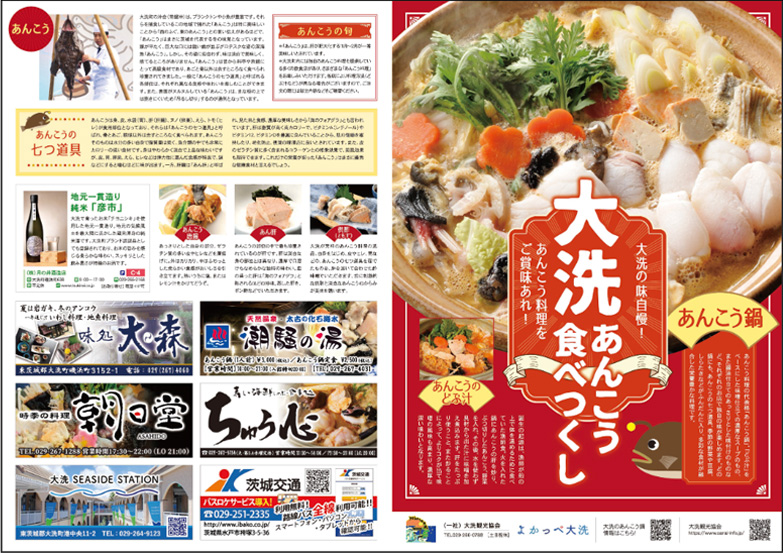
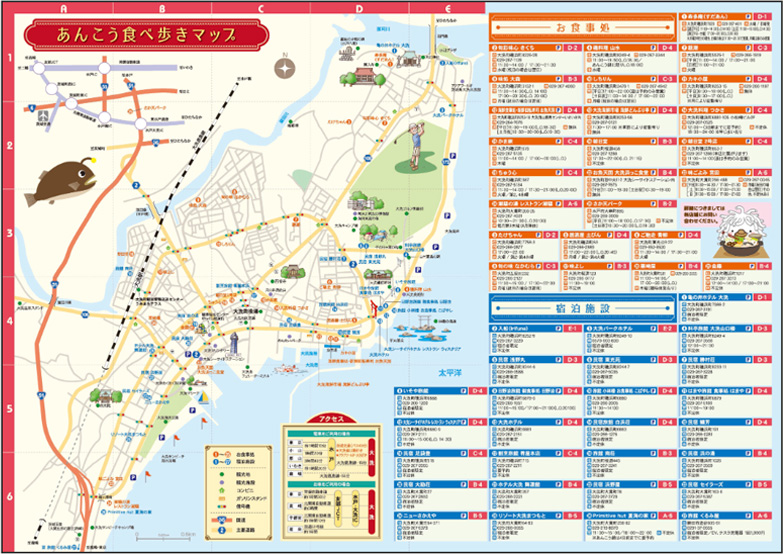
Each inn serves delicious monkfish cuisine every winter (about November to March the following year).
Please contact each inn for more information.
The following restaurants offer monkfish cuisine every winter (about November to March the following year).
Please contact each restaurant for more information.
